Today’s lecture will focus on 3 types of filter media powder available for Diatomaceous Earth pool filters. D.E. filters have a set of fabric coated grids (aka elements or septums), which are arranged and spaced apart inside the filter tank. DE filter grids don’t actually filter the water; the powder is the filter media, coating the grids to trap dirt as the water passes into the grids and out of the filter.
Diatomaceous Earth, Perlite and Cellulose are 3 types of natural filter media, or filter powder that can be used in DE pool filters.
DIATOMACEOUS EARTH
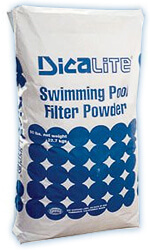
DE powder is composed of the ancient skeletal remains of Diatoms, which are harvested from the ocean floor, and separated into clean, white powder.
The major component of Diatomaceous Earth powder is silicon dioxide, a mix of amorphous and crystalline silicone, or glass.
Crystalline silicone dioxide has been linked to health problems for users. D.E. also doesn’t break down and rinse away as easily as alternative filter medias, which can be harmful to sensitive local ecosystems.
At a cost of less than $1 per pound, D.E. powder is the number one choice for DE filter media, and filters water effectively down to 3-5 microns.
PERLITE
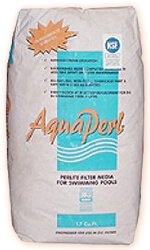
Perlite is another natural product, produced by heating volcanic rock to extremely high temperatures, at which point it explodes like popcorn.
These Perlite kernals, containing hundreds of tiny air pockets are then ground down into a very lightweight powder, for use in DE pool filters. Perlite is so lightweight, that only half the amount of DE powder is needed.
Proponents of Perlite say that the light weight results in less bridging between grids, more complete backwashes and longer filter cycles, as compared to DE powder.
At $2 per pound, Perlite is twice the cost of DE powder, but half the weight – meaning that you only need to use half as much for the same filtration ability of 3-5 microns.
CELLULOSE
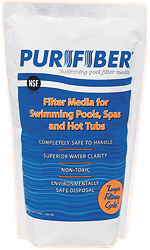
Plant based fibers, wood pulp usually, are the main components of Cellulose Fiber filter media. Natural, biodegradable, renewable and non-toxic.
Cellulose fiber also makes a good filter aid for sand and cartridge filters, increasing their filtration ability and protecting filter cartridges.
Cellulose may clog-up sooner than DE, being that it can also trap oils and grease, unlike DE powder, and other particles as small as 2 microns.
Cellulose fibers are so effective, they can even clog-up from the use of polymer chemicals, such as algaecides, clarifiers, phosphate removers or metal removers, which are not recommended for use with fiber media.
At $5 per pound, PuriFiber is the most costly of DE filter alternative media – but it goes much further, only 6 oz is needed for each 10 Sq Ft of filter area.
If you have a DE pool filter, and are concerned with possible health or environmental risks of using DE filter powder, consider using an alternative filter media such as Perlite or Cellulose in your tank.


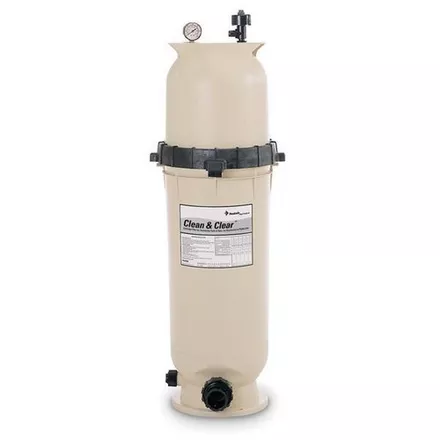
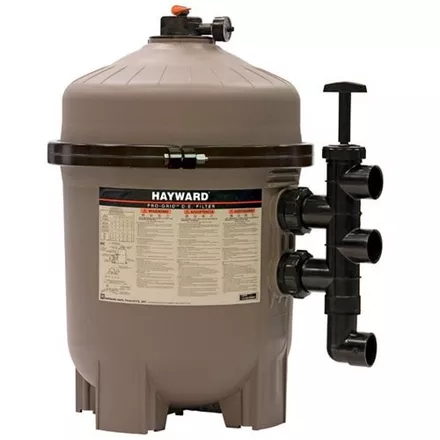
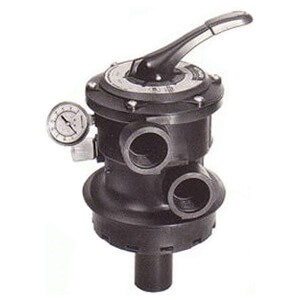
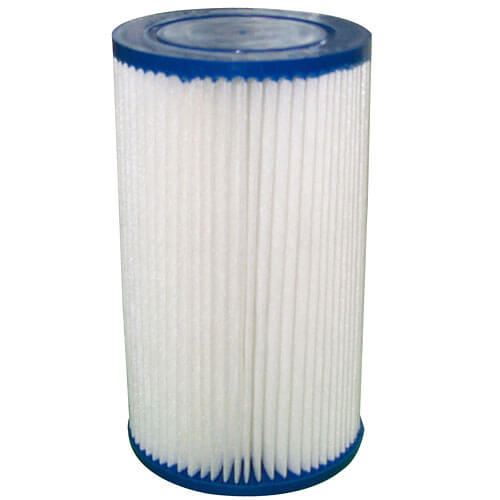
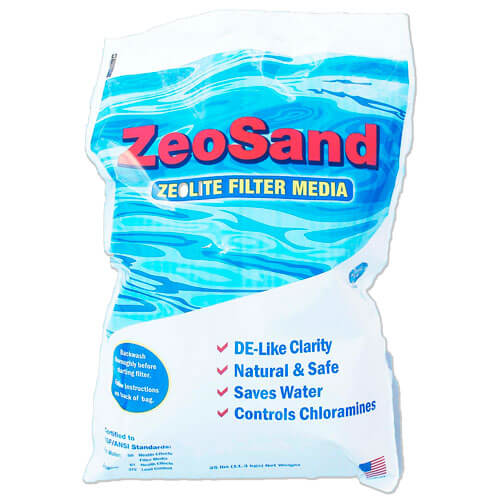
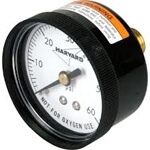
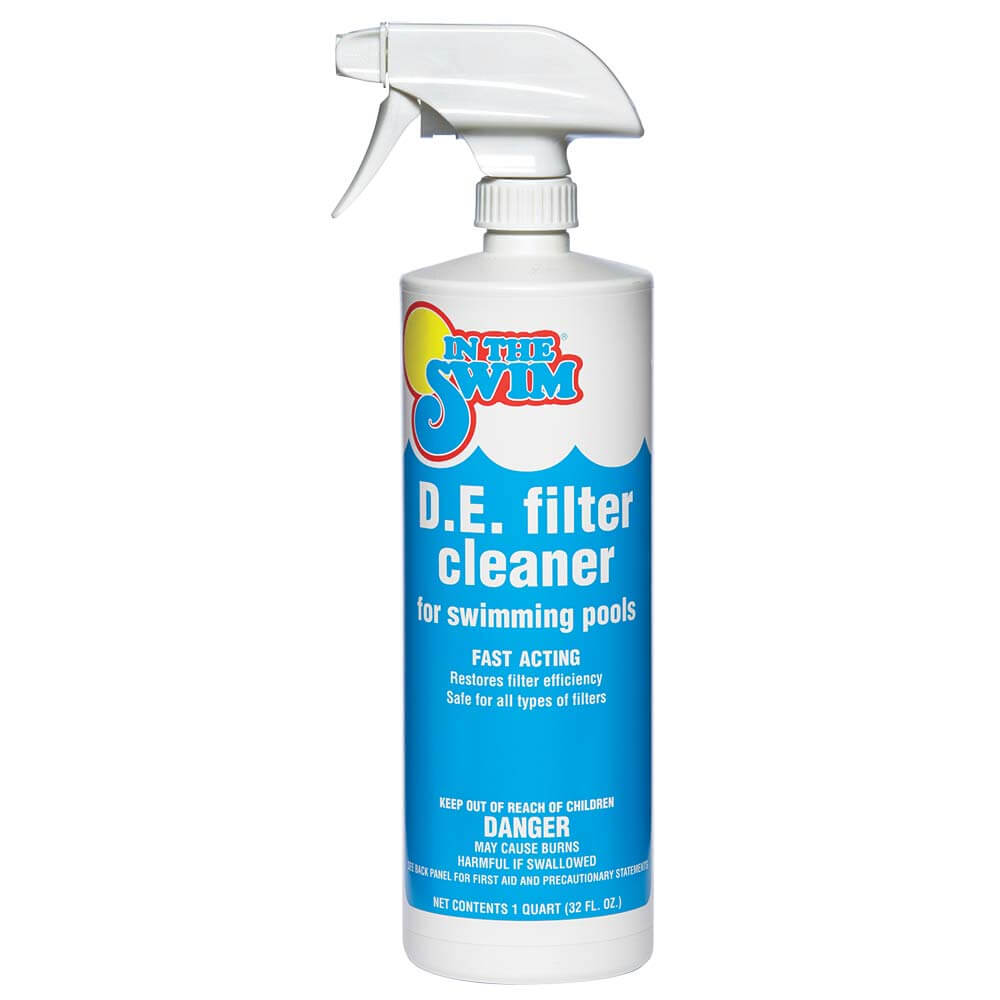
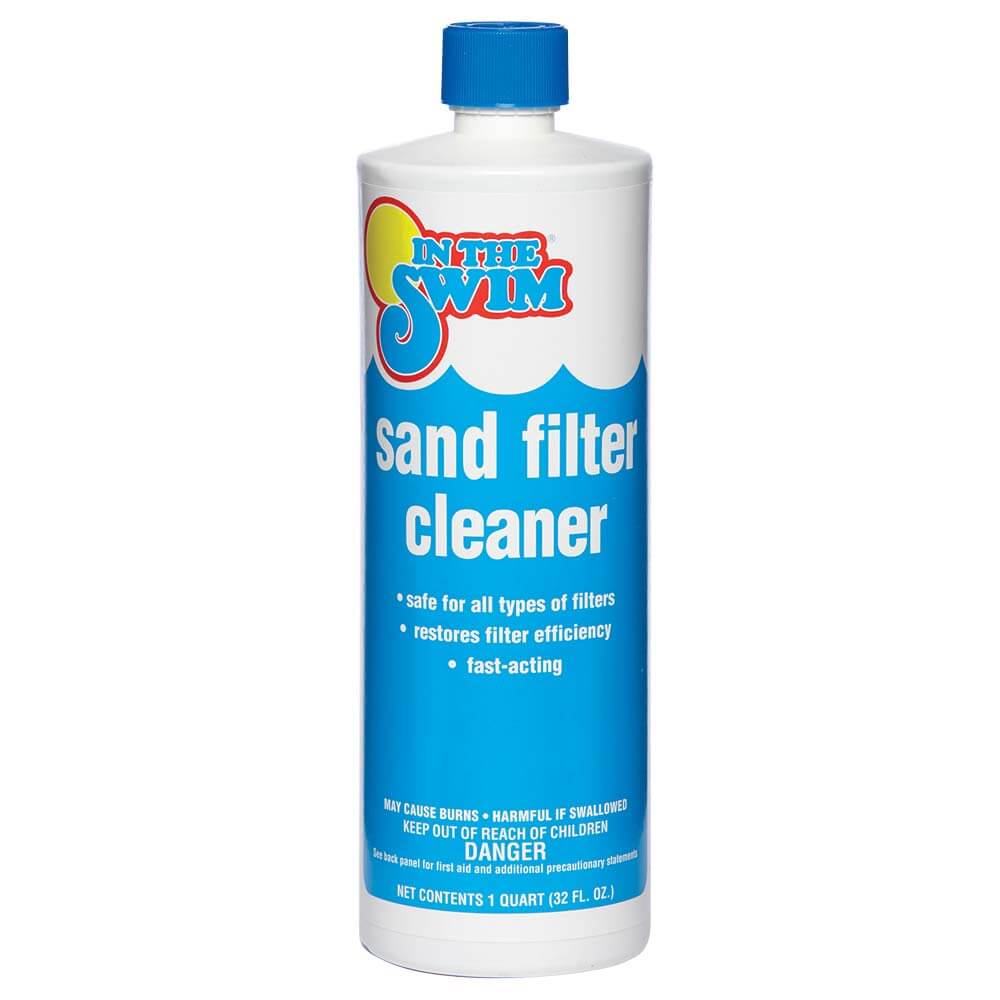
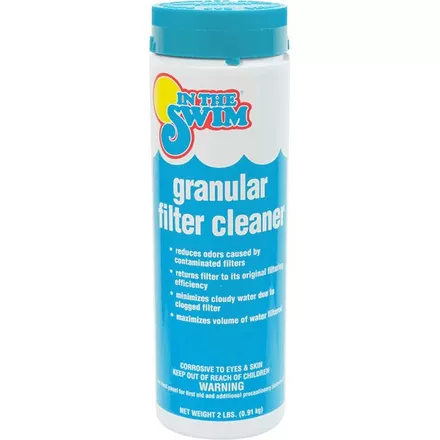

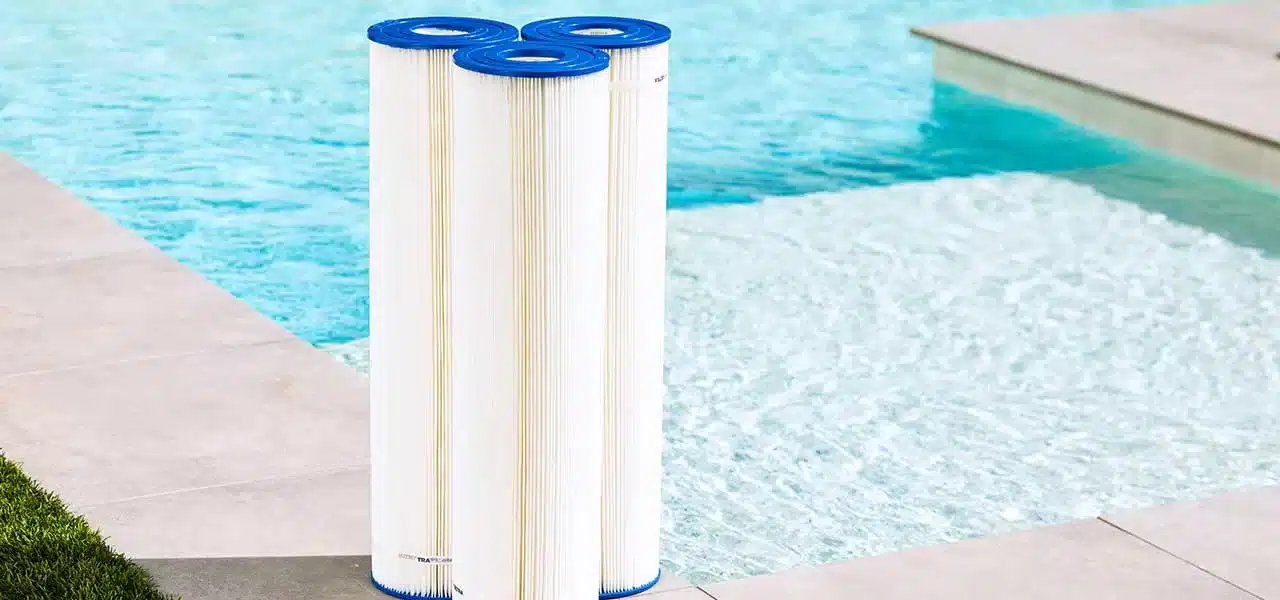
Just a couple of notes on D.E. It is actually mined from ancient sediments in Oregon mostly. Perlite weighs half as much as DE but in a filter measures exactly the same as DE by volume. In our store we source perlite for the same price as DE therefore we sell it for the same price as DE by volume.
DE is the only way to go. 30 year pool professional. “Paper”? sure, go for it.
My pools look crystal clear with DE. I TRIED THE PAPER and customers complained. What can I say?
I’m using cellulose fiber and having problem maintaining return water pressure to the pool. Frequently rinsing and backwashing seems to be using a lot of chemicals and wasting a lot of water, but if we don’t do that at least daily, if not a couple times a day, we have very, very little water pressure returning to the pool and I’m afraid it’s going to ruin our pump.
We have completely taken the filter apart and washed the grids multiple times already this season. We opened the pool early in May. After doing so, we’re tried gradually decreasing the amount of cellulose from the recommended 9 cups to 4 cups.
What are we doing wrong? Please help!
Hi MaryAnn, My first thought is that the grids may be clogged with oils and/or scale. You can use a filter cleaner for DE filters, soaking the grids in a large (clean) trashcan filled with 20 gallons of water or so, and 1-2 qts of filter cleaner to soak. Flip the grids over if they are taller than the water level, after a few hours. Spray really clean and reinstall. Alternate to the DE filter cleaner we sell, you could also use TSP, soaking the grids to remove oils and grease, followed by a soaking in a 20% acid solution for 20 minutes, to dissolve scale and minerals (it could be either or both clogging the grids). If you can use two cans, then after soaking in acid, put back into the TSP can to neutralize the acid, then hose off completely and reinstall in the tank. Secondly, I wouldn’t think that using less than the recommended amount would help the situation, but only make the problem worse. Also, with DE powder, 1 lb of DE powder is actually 32 oz of dry measure, or 4 cups = 1 lb. of DE (because it’s so fluffy). Not sure if that is the same with cellulose fiber, but be sure to follow their guidelines closely. Many people with DE filters that have the problem you describe simply aren’t using enough DE powder. Finally, if this continues, try switching to DE powder, or use AquaPerl, a Perlite DE substitute, like Cellulose Fiber (PuriFiber), which is plant based – to see if the problem may lie with the powder being used.
I find when this happens that I have half the grids with some of the ribs broken in them usually near the edge of the grid you wouldn’t think there was enough to cause a problem but it does a small amount of collapse on a grid will and does cause this problem